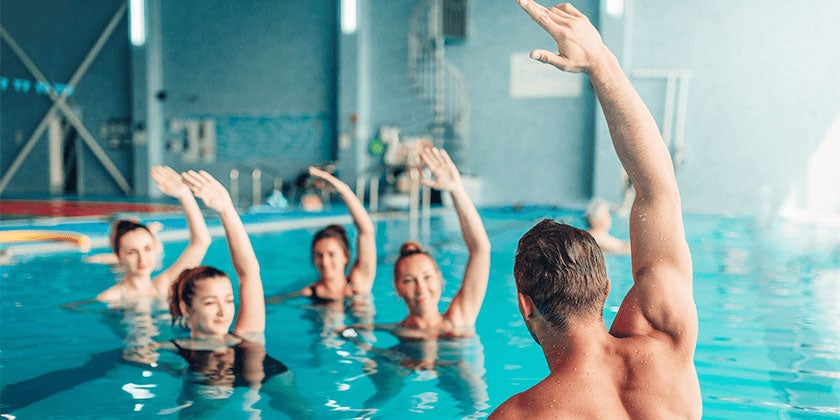Hydro power: how aqua workouts help runners

If you think aqua workouts are only for the elderly and infirm, think again. Everyone from everyday exercisers to elite athletes are getting amazing results by adding water sessions to their training regime.
Teacher and fitness expert Marietta Mehanni shares the benefits of this style of workout, and tips to make it work for you.
What’s so good about water workouts?
Not convinced getting wet is needed in your training routine? These benefits may change your mind!
- You will get both strength and cardiovascular exercise in an aqua workout, because of the water’s natural resistance. This also makes it good for balance and coordination.
- The gravitational pull on the body is reduced by around 85 per cent, so there’s very little chance of injury and minimal stress on joints.
- Post-exercise stiffness is reduced with an aqua workout, so you can work out more often and enjoy the massaging effect of water on your muscles.
- The hydrostatic effect of water means you pump 10–20 per cent more blood per beat, so you can work harder. You’ll also need less rest between sets because the heart recovers faster. In addition, water’s cooling effect means you won’t get hot and sweaty during your session, which also helps keep up the intensity.
- Aqua workout exercises see limbs moved backwards and forwards and up and down, so muscles are worked equally.
- It can even be good for the brain as many exercises involve arms and legs moving counter-intuitively.
How can I use it to help my running?
Apart from a range of exercises that will strengthen legs, glutes, core and every other part of your body; deep water running is used by many athletes to maintain fitness while injured.
Running is hard on joints, which makes this a good alternative if you feel you need to back off a bit on your training. Read Why running is better with buddies to get started.
Here’s what you need to know to get the most out of it for your running:
- It helps to wear footwear with some kind of grip on the soles when running in water. This will prevent sliding and blisters especially if you plan to do any sort of distance work.
- Move opposite arms and legs together when running in water i.e. when the right leg is forward, so is the left arm. This improves stability, prevents rocking from side-to-side, and is also good for the core.
- Push through the water with as much power as possible. Don’t let arms or legs go floppy. The faster you go, the better. That’s not only to increase resistance and work the heart harder, it also avoids any tendency to let the water do the work of lifting and lowering your limbs.
- Try a variety of running actions to relieve boredom and work different muscles. Focus on high knees, bouncing from one foot to the other as if running in tyres, and go forwards and backwards.
- Drive with your arms, which will work the big muscles in the back and hold your core firm.
- If you have good balance and want to try running in deep water, you can use ankle floats that Velcro around the ankles like buoyancy cuffs.
Alternative exercises
Remember, aqua workouts are not like swimming where the aim is to be as streamlined and efficient as possible. For maximum fitness improvements, go for big inefficient movements. Move arms and legs as far from the centre of your body as possible, and instead of slicing your hands through the water, spread fingers wide and push palms forward.
Scissors
Using a noodle for buoyancy if you need it, scissor legs back and forth. Work arms simultaneously straight up and down from the hips and out.
Jumping
Jump somewhere between chest and waist height in water. Do as many tuck jumps as you can for as long as you can or try star jumps. Try jumping legs out while bringing arms in to engage some brain power.
Donkey kick
Standing on the bottom of the pool, kick one leg at a time straight out to the front, side and back. Engage quads and put your hand on your tummy to feel abs working. Alternatively, kick one leg behind while punching forward with arms. Change legs and repeat.
Beachball pull
Get a beachball and hold it with arms stretched out straight in front, legs extended behind, face-down in chest deep water. Keeping arms straight, pull the ball underneath you drawing it as fast as you can through the water towards your thighs. When it reaches your thighs, bend elbows to bring it back to the surface, return to start position and repeat.
Otter roll
Hug a beachball to your chest and float on your back with legs extended and feet together. Roll left and over the top of the ball to make a full revolution. Really drive your leading shoulder and hip into the water to get rolling. You should work your entire body – back, abs, glutes and legs. Continue for 30 seconds alternating the direction of your roll.
For more hydro power ideas check out Marietta Mehanni’s videos on YouTube.
29 May 2018